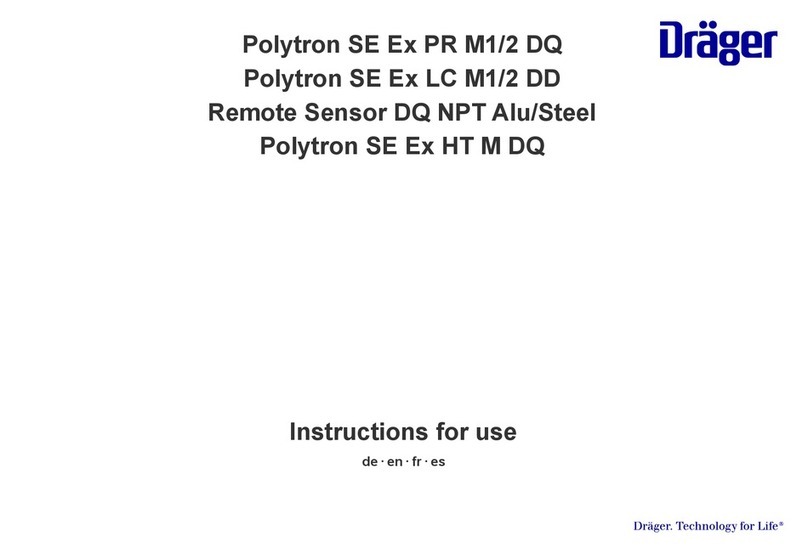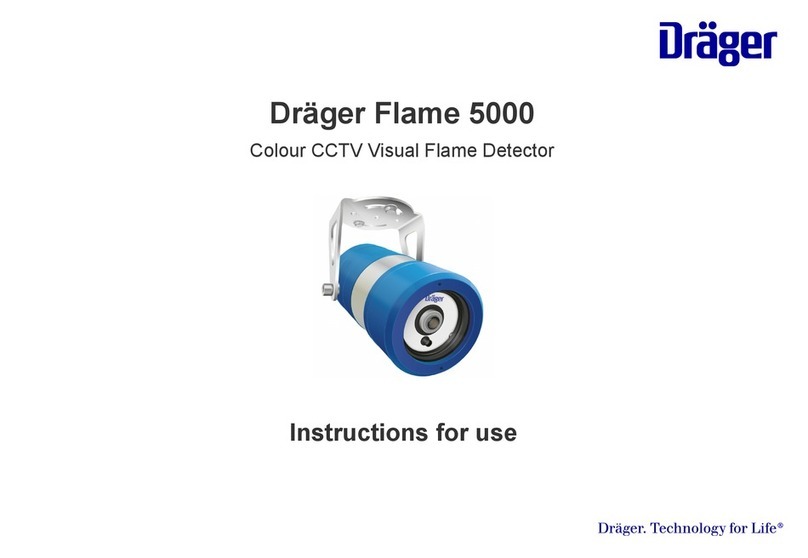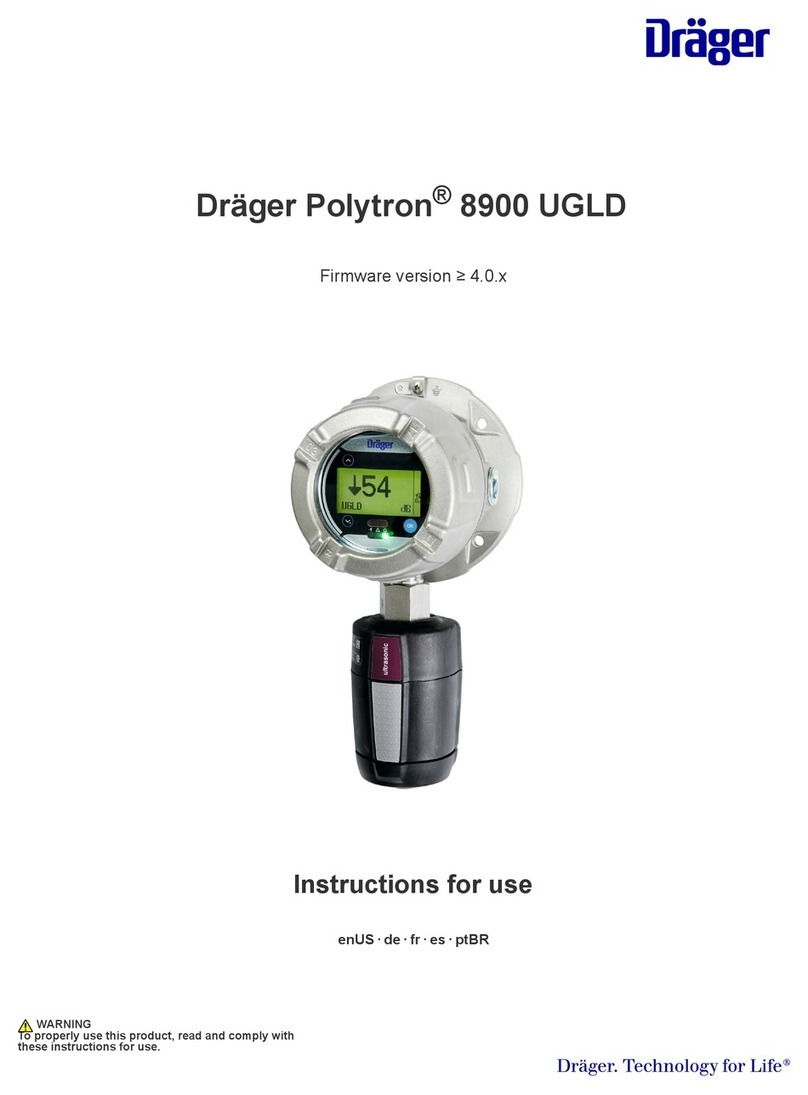
Use
Dräger X-am 5100 7
3 Use
3.1 Preparations for use
Before using the instrument for the first time, the
enclosed batteries or a charged T4 NiMH power pack
(Order No. 83 18 704 / 83 22 244) must be inserted,
see "Replacing the batteries / rechargeable batteries" on
page 8.
The X-am-5100 is ready for operation.
3.1.1 Charging the rechargeable batteries
To maintain the lifetime of the batteries, charging is only
performed within a temperature range of 5 to 35 °C.
Outside this temperature range, the charging is
automatically interrupted and resumes automatically after
the temperature is within the range again.
The charging time is typically 4 hours.
A new NiMH power pack reaches its full capacity after three
complete charging/discharging cycles.
Never store the instrument for extended periods without
being connected to a power source (maximum of 2 months)
because the internal buffer battery will drain.
Charging with the multiple charging station
A maximum of 20 instruments can be charged at the same
time on the power pack (Order No. 83 18 805) of the
multiple charging station.
When attaching the charging modules, disconnect the
power pack from the mains supply!
Position the instrument on an even and level surface.
1. Turn the slots of the interlock into a horizontal position by
using a screwdriver or coin.
2. Insert the projecting tongue (2) of the charging module
(doubles as power feed) until it engages.
3. Close the lock (1) with a quarter turn (slot is positioned
vertically).
4. Attach additional charging modules in the same way.
5. Connect the power pack to the mains.
The green "Mains" LED (1) lights.
6. Insert the switched-off instrument into the charging module.
LED indicator (5) on the charger:
If a fault occurs:
Remove the instrument from the charging module and
insert it again.
If the fault still occurs, have the charging module repaired.
It takes approx. 4 hours to fully charge an empty
rechargeable battery.
In the event of a short circuit or if the power pack is
overloaded:
The red "Overload" LED (3) lights, and an audible alarm
sounds.
After the fault has been corrected, the alarm is switched
off automatically and the charging process is restarted.
In the event of a power failure, the instruments already
charged will be protected from discharging.
WARNING
Danger of explosion!
Do not charge underground or in explosion-hazard
areas!
The chargers are not designed in accordance with the
regulations for firedamp and explosion protection.
Charge power packs type HBT 0000 or HBT 0100 with
the appropriate Dräger charger. Charge single NiMH
cells for battery holder ABT 0100 in accordance with the
manufacturer's specifications. Ambient temperature
during the charging procedure: 0 to +40 °C.
NOTICE
Even if the instrument is not in use, Dräger
recommends that you store it in the charger
(chargermodule X-am 1/2/5000, Order No. 83 18 639).
CAUTION
Always connect or disconnect the charging modules
individually and not in groups in order to prevent the
charging station from becoming damaged. During
transportation, the power pack and the charging
modules should also always be handled individually
and without inserted instruments.
!
i
i
!
Charge
Fault
Full
CAUTION
A short circuit of the charging contacts in the charging
modules, e.g., by metallic objects that have fallen in,
will not result in damage to the charging station.
It should, however, be avoided due to possible heating
hazards and incorrect displays on the charging
module.
00733280.eps
2121
1
34 5 5
0
X-am 5100
HCl ppm
0
X-am 5100
HCl ppm
0.0 0.0
!



















































